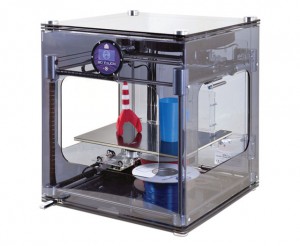Print Your Own Guns and More! – Legal Aspects of 3-D Printers
When shopping online, I often think how convenient it would be if I could get my purchases instantly, rather than having to wait for days while the items are shipped. This is the unmistakably a trade off with commerce on the Internet.
 Well, it may not be a trade off for much longer. These days, people are already creating or purchasing files to print working guitars, camera lenses, bikinis, working guns… The list goes on.
Well, it may not be a trade off for much longer. These days, people are already creating or purchasing files to print working guitars, camera lenses, bikinis, working guns… The list goes on.
It may sound a bit unreal, but it is entirely true. 3-D printing, also known as “additive manufacturing,” has been around since the 80s. As technology has progressed, so has the capacity and availability of these printers.
3-D printing is a process by which the printer reads a file and then uses a filler to follow and build the design through a design of vertical and horizontal cross sections. These fillers can range from polymers to metals to paper and pretty much anything in between. This is definitely an over-simplification, but you get the picture – much like a common, household printer, a file tells the printer to follow a design. The primary difference is that the end result is not ink on a paper, but a strong filler formed into an object.
1. Intellectual Property
Intellectual property is going to be the biggest area of concern when 3-D printers become widespread. Remember when sites like Napster used to get sued, and then their users started getting sued? Well, imagine that, but potentially on a wider scale.
Copyright covers a physical manifestation of an expression, which gave rise to litigation over MP3s and music licensing. Likewise, 3-D printing certainly has the potential for copyright infringement. For example, if someone uses a 3-D printer to recreate a sculpture or a statue of an artist they love, and the time frame of protection is still in force, that individual may be liable for copyright infringement.
Similarly, some unique product designs that may be essentially replicated by these printers could trigger trademark law. A useful example would be Ray Bans or an easily recognizable type of gym weight that could basically be copied for nothing and dilute the images of those brands.
Finally, and I think most pressing, are patent issues. I think these will prove complicated because the time it takes to actually file a patent could likely far exceed the time it takes to replicate the invention. Moreover, the software used in these machines has been the real crux of the innovation, and perhaps ironically, may be what ties it up, once the patents start to and continue to roll in. Furthermore, because of the wide array of patentable material, combined with an invention that could ostensibly create it with a few keystrokes, these printers may essentially clog an already clogged PTO indefinitely. What’s more, the patents covering certain materials used in the printing process have recently expired, drastically reducing the costs of these materials and therefore increasing their availability.
2. Regulation
This is probably not everyone’s favorite word, but “who will regulate this stuff?” should at least be a passing thought when the idea of printable weapons comes to mind.
It certainly has been on the mind of the Department of Homeland Security, who has begun lobbying for federal and state legislation regarding efforts to at least try to control the dissemination of 3-D printing files for functioning guns. Some legislatures have suggested regulating printers themselves, completely eliminating the ability to print weapons. This would clearly invoke free speech rights and could have a disastrous effect on an otherwise profitable, legal enterprise.
Plus, with the availability of almost anything on the Internet through peer-to-peer sites, it is perhaps a pipedream to imagine such regulation could be feasible in the first place.
The prospect of printing a small boat or musical instrument from the comfort of home is a staggering one, and one that we will likely see in our lifetime. But if you ask me, watching how governments and society responds to this technology will be just as interesting as type of products these printers can create.

Comments